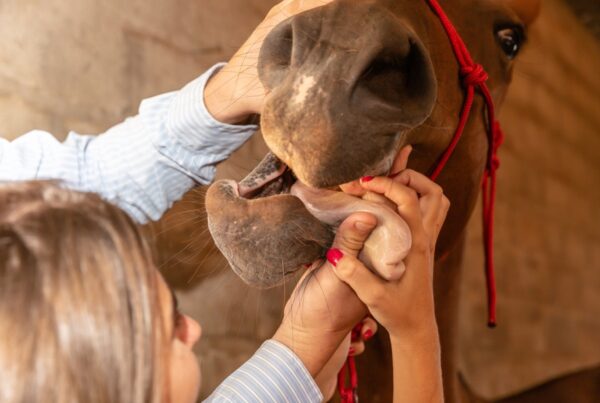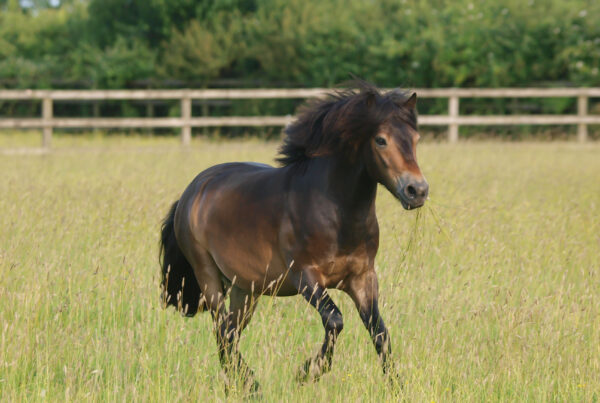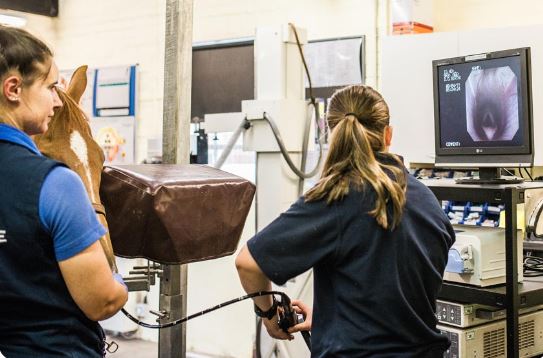This article is about Artificial Insemination (the process of collecting semen from the male and manually depositing it into the female reproductive tract), rather than Artificial Intelligence – a rather confusing case of two very different processes using the same initials!
The veterinary type of AI is becoming increasingly popular in the equine world and has given owners and breeders access to genetic material from a vast array of stallions from across the globe.
Whilst some governing bodies, such as The Jockey Club, still require natural cover, AI boasts several benefits to the animals and people involved in the breeding process. These benefits include:
- Reduced risk of disease transmission
- Less physical demand and risk of injury to both the stallion and the mare
- Improved monitoring of semen quality
- Semen collection from deceased stallions
- Access to a wider genetic pool
- Remote insemination, meaning the stallion does not have to travel or take time out of competing
- Increased number of pregnancies per ejaculate
Semen supply options
Several options exist for AI – fresh, chilled and frozen semen. The timing of the insemination, the semen available and the management of the mare dictate the most appropriate option in each scenario.
Fresh semen
Fresh semen is exactly that – fresh. It is collected from the stallion and inseminated into the mare very shortly after collection, meaning the mare and stallion must be in close proximity. Fresh semen generally achieves the highest conception rates and requires minimal to no semen processing. However, it can be logistically difficult as the mare and stallion must be in close proximity, and the limited lifespan of the semen outside of the mare means timing is critical.
Chilled semen
Chilled semen is generally collected the day before or the day of insemination, buffer and extender fluids added, and the sample chilled and shipped to its destination. Chilled semen is the next best thing to fresh and can generally be transported for 24 hours without affecting the quality of the sample. The main drawback of a chilled sample lies in the delivery time – as with all courier services, delays happen and the mare may ovulate before the semen arrives, or the sample may not be delivered within the 24-hour window.
Frozen semen
Frozen semen is shipped and stored at -196 degrees Celsius after being processed. It has traditionally been considered as less preferable than fresh or chilled samples, but advances in technology mean this gap is closing and equally good conception rates can be achieved with frozen samples (although a small percentage of stallions produce semen that just doesn’t seem to survive freezing). Frozen semen can be stored indefinitely in appropriate conditions, can be shipped without concerns over its longevity and sample straws can be ordered and delivered in advance of the mare’s ovulation. However, once thawed, the sample has a shorter lifespan within the mare, so insemination timing is critical. Storage, handling and thawing of frozen samples can also be difficult, making it less widely available.
The mare reproductive cycle
Mares are considered long day breeders, and begin their oestrus cycle when day length increases, usually between March and September in the UK. During the winter months, mares are sexually inactive (anoestrus). As day length increases, hormone levels in the mare’s body rise, stimulating follicles on the ovary to grow. Eventually one follicle becomes dominant and releases an egg in the process of ovulation. Horses are ‘polyoestrus’, meaning they have multiple cycles throughout the summer months, with each cycle lasting approximately 21 days. Within this 21-day period, the mare is usually sexually receptive for between 3 and 8 days, when she will show signs of being in season, including posturing and showing interest in the stallion. These behavioural signs are due to increased levels of oestrogen.
Ovulation generally occurs 24-48 hours before the end of this period, and the mare’s oestrogen levels then drop, and she is no longer receptive to the stallion. If the mare is not inseminated and no pregnancy is detected by her body, oestrogen levels begin to climb again, and the 21-day cycle repeats. If a pregnancy is detected, what remains of the dominant follicle, the corpus luteum (CL) will produce hormones to maintain the pregnancy and prevent the mare coming back into oestrus, meaning she will stop cycling.
Pre-breeding checks
Before AI is considered for any mare, she should undergo a pre-breeding check. These checks are performed by one of our veterinary surgeons and involve a series of examinations and tests to ensure the mare is suitable to undergo artificial insemination. Pre-breeding checks help to minimise risks to the mare and maximise the chances of a successful pregnancy.
The checks will usually involve a discussion with the owner regarding their expectations, the semen sample being used and the mare’s previous medical and reproductive history. The mare will then undergo a full clinical exam to assess her general health and condition, and also an examination of her reproductive tract using a speculum, a rectal examination and an ultrasound examination. Samples will then often be taken from her clitoris and her uterus to assess for contagious or infectious diseases that may affect the pregnancy and future foal.
The pre-breeding checks should ideally be performed in the transitional phase (early oestrus) or when she is cycling normally.
The stallions providing the sample will also undergo testing to ensure the semen is free from contagious diseases.
The process of artificial insemination
The success of AI relies heavily on timing and ensuring the mare is inseminated at the correct stage in her cycle, while also considering the longevity of the semen sample used. Ensuring correct timing often involves repeat rectal and ultrasound examination of the mare’s reproductive tract to detect when ovulation is likely to occur by taking measurements of the follicles and assessing how much fluid is in her uterus. The aim is to inseminate the mare prior to ovulation, with the exact window varying depending on the semen sample used. Because frozen semen has a shorter lifespan within the mare, there is a narrower insemination window, meaning more regular examinations are generally necessary.
Prior to insemination both the mare and the semen sample must be accurately identified to confirm the correct sample is going to the correct mare, the mare’s vulva is cleaned, the tail bandaged, and the semen introduced into the uterus. For fresh and chilled samples, the semen is introduced via a long pipette, but for frozen, a deep uterine insemination technique is usually used, where the sample is deposited directly at the opening of the oviduct to enhance the success rate.
Once the mare has been inseminated, she must undergo a post insemination examination. Semen can initiate an inflammatory response within the mare’s reproductive system, known as endometritis. If endometritis is detected, it can be treated promptly to minimise its effect on the pregnancy. The post insemination examination is also important to ensure ovulation has taken place, and also to check the number of ovulations, which can help to detect multiple pregnancies (twins) later on. The post insemination examination will usually take place between 6 and 24 hours after insemination.
Pregnancy diagnosis
Following a successful insemination and ovulation, a transrectal ultrasound examination between 14- and 16-days post ovulation will be carried out to determine whether the mare is pregnant. At this stage, multiple pregnancies can be detected and dealt with. Further scans are generally then recommended to ensure the pregnancy is developing as it should be. If the mare is not pregnant, the insemination can be repeated.
Our AI services
If you are looking to breed from your mare, we can provide comprehensive AI services with fresh or chilled semen, and we are working towards providing frozen semen AI in the near future. We are currently listed on the BEVA approved AI list for fresh and chilled semen.
Scanning can be performed either at our practice in our stocks or at your yard with our mobile ultrasound scanners. On call vets are available 24/7 for foaling emergencies when the time comes.
Full details of our artificial insemination packages can be found here, including prices.
If you have any questions about AI, breeding or foaling, please contact us – we will be happy to help.









